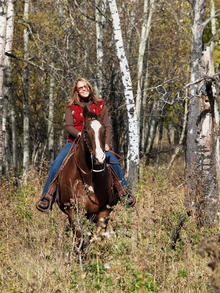In a study that looked at the number and types of weed seeds which can be dispersed through horse manure, 15 studies on seed germination from horse dung; six from Europe, four from North America, three from Australia and one study each from Africa and Central America were closely analyzed in relationship to horse's presence in National Parks throughout the world.

Horses - A threat to plant life in national parks?
The study highlights the range of plant species which have the potential to be dispersed over long distances by horseback riding in national parks.
Research team leader, Associate Professor Catherine Pickering and her associates discovered that, "Of the 2739 non-native plants that are naturalized in Australia, 156 have been shown to germinate in horse dung. What is very concerning is this includes 16 of the 429 listed noxious weeds in Australia and two weeds of national significance."
In an article published in the journal Ecological Management and Restoration, the scientists reported that they found a similar threat emerging overseas with seeds from 105 of the 1596 invasive/noxious plant species in North America also germinating in horse dung.
"Not only are the seeds dispersed through dung but the manure provides the means by which the introduced plant takes hold," Associate Professor Pickering said. "Habitat disturbance from trampling has been demonstrated to further facilitate the germination of seedlings from dung in both natural and experimental studies."
The study highlights the range of plant species which have the potential to be dispersed over long distances but the extent to which this dispersal is harmful depends on the individual plant species.
Some plants germinate from dung and go on to reach maturity and flower, while others germinate but don't survive.
But there are other factors to consider. "Additional threats come in the form of trampled soils and vegetation, nutrient addition via dung and urine, and changing hydrology via damage to riverine systems," Associate Professor Pickering said.
"To maintain the conservation value of protected areas, it is vitally important to understand and manage the different potential weed dispersal vectors, including horses. Legislators everywhere should take these into consideration before opening parks to this recreational activity."
